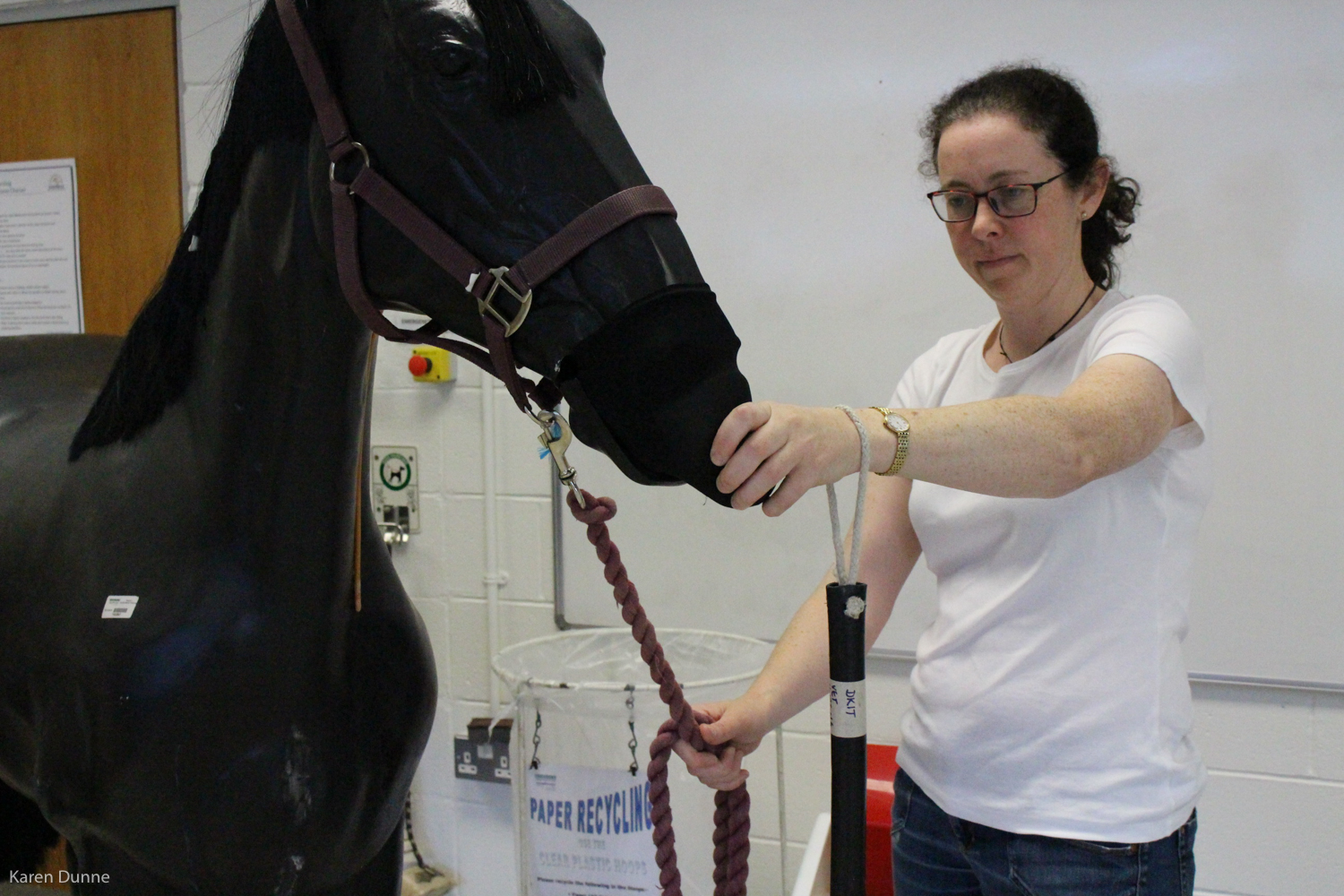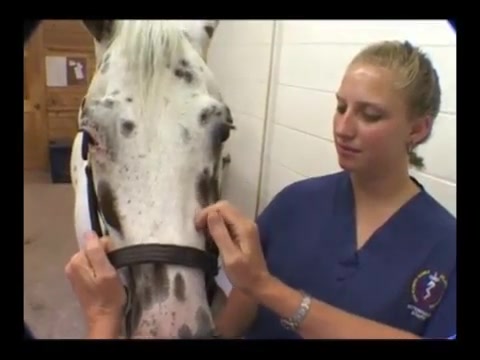Same side as the veterinarian. Around corner Psafe but may lose some reach.
Physical Examination Of The Horse Respiratory System Alexander Street A Proquest Company
If any of the people move to the other side of the horse all people present should move as well.

. When holding a horse for examination always stand on the A. Must hold to one side of the rectum so you do not take the faecal temperature. Log in for more information.
Youve correctly employed a heart-girth tape and a rectal thermometer observed the frequency of the horses breathing and written down your findings. When holding a horse for examination always stand on the same side as the veterinarian. As the judge moves around the horse the handler moves.
Any horse owner can perform a basic physical examination of their horse with some basic tools and horsemanship. If holding a horse becomes particularly difficult chemical restraint can be considered. Nose twitch using chain or rope twitch - handler should stand at the horses.
It is important when performing an examination on a horse to ensure that it is held rather than tied. When holding a horse for examination always stand on the A. The amount of information that this physical exam can.
A soothing reassuring tone goes a long way in calming a fractious horse. Youre preparing a horse for a physical examination. Examination is then continued on the left side for visual inspection of the integument and auscultation of the abdomen and thorax as noted in the focused physical examination.
Side opposite the veterinarian. Most horses remain in the standing position because their weight places excess pressure on their internal organs when lying down. Squinting an eye or blinking an eye a lot.
A prepurchase examination of a horse. Learn vocabulary terms and more with flashcards games and other study tools. In cases of symptoms such as the ones above its especially important to conduct a health examination on the horse.
Lower leg pain of the foreleg. Moreover both the handler and the veterinarian should stand on the same side of the horse. Foals spend more time on the ground during naps until.
When holding a horse for examination always stand on the A. Start studying Clinical Examination of the Horse. When holding a horse for examination during a horse show halter class you begin by standing on the left side of the horse facing the judge.
If a horses mouth gapes while he is being ridden he may be in pain. Adult horses only lie down for brief periods of time. The person holding the horse should always be located on the same side of the horse as the person performing the procedure.
Side opposite the veterinarian. There are two issues going on here. Most resting horses have rectal temperatures of 980-1015 F.
Feces from _____ lack distinct form. A horse holding a foreleg in front of the vertical. Hold the horses tail with one hand and insert the lightly lubricated thermometer tilted slightly downwards with the other in order to take her temperature.
For advice they should be told. The first is that the human hasnt put a premium on the activity of being still in one spot. Check the fit of your bridle and bit and schedule a dental examination to make sure his teeth arent hurting him.
When holding a horse for examination always stand on the A. Straps fastened around a horses legs to restrain their movements are called hobbles. When holding a horse for examination always stand on the same side as the veterinarian.
If you hold off a vein by pressing on it with your finger youre. Side opposite the veterinarian. Never allow a dog to jump off the _____.
Stand on the left hand side of your horse near her hip. A physical examination of the horse is commonly performed by a veterinarian as a part of an annual health checkup pre-competition type of screening or during a period of illness. Generally the examination should begin at their head working your way back and down.
Same side as the veterinarian. In the general examination the right side of the heart is then ausculted the right jugular vein is occluded and the right side of the head and. Rectal Exam Restraint Considerations Over half door Pmay protect from kick but if horse goes down you lose your arm.
Is not always possible. Same side as the veterinarian. Skin twitch The loose skin in the lateral neck region just in front of the shoulder is grasped and rolled forward.
They just follow the horse to the new spot each time he moves. The most common reason for lameness in the horse is. So the compliant horse never learns that this is something important to the human.
If your trusty steed seems abnormal in his hind leg resting position check the foot and leg more closely and make him. Same side as the veterinarian. Same side as the veterinarian.
The horse is leading the dance. Stand to the side of the horse and reach around the rear staying close to the horse. These four words stand for the.
Verbal Restraint Talking to horses has a major effect. Always lift with your _____ never your _____. Last if your horse stops eating and stands with his neck stretched out and his mouth gaping he may be experiencing choke an obstruction in his esophagus.
The digital thermometers will. Straps fastened around a horses legs to restrain their movements are called A. When holding a horse for examination always stand on the same side as the veterinarian.
Be reluctant or averse to urinating or urinating frequently. Answer 1 of 53. When examining a horse with colic a rectal examination.
When holding a horse for examination always stand on the A. Side opposite the veterinarian. Side opposite the veterinarian.
A horse standing three-legged resting a hind foot is usually nothing to worry about but might be an indication of pain and trouble.
Nose Twitch Vet Nursing Education
Restraining A Horse For The Vet Expert Advice On Horse Care And Horse Riding

0 Comments